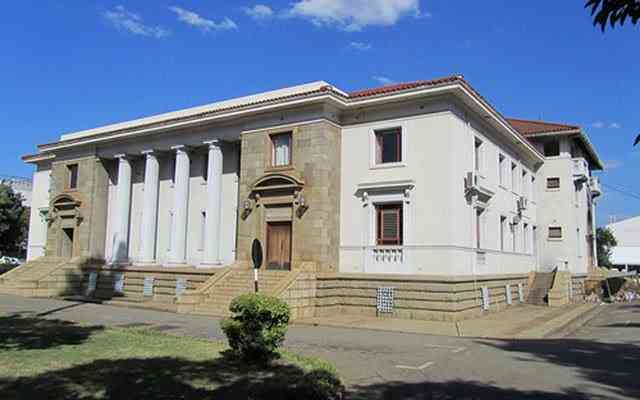BEFORE the introduction of Zimbabwe Gold (ZiG) currency, a survey by top financial analyst highlighted a harsh reality: Within just six hours of receiving Zimbabwean dollars, most individuals would have already spent them.
By the close of 2023, the currency crisis had deepened, with the parallel exchange rate of US$/ZWL reaching 10 500, while the auction rate lagged behind at a 72% discount.
The situation worsened in the first quarter of 2024, as the parallel exchange rate surged to 35 000, with the official rate remaining 43% lower. Addressing this escalating currency crisis became critical, prompting Reserve Bank of Zimbabwe governor John Mushayavanhu to assume office a month earlier than planned.
In 2024, five companies were placed under corporate rescue: Truworths, Bindura Nickel Corporation, Beta Holdings, Metropeach, and Khayah Cement. A key factor driving these developments was the challenging economic environment, largely shaped by the ongoing currency crisis.
Businesses struggled to implement survival strategies amidst significant disparities between the parallel exchange rate and the official rate. Telecoms giant Econet Wireless reported 25% of its revenue for the fiscal year ending February 29, 2024 being eroded by exchange losses.
Similarly, retail giant Meikles, operating through its flagship TM Pick n Pay segment, incurred exchange losses of approximately US$16 million for the same period, which significantly impacted the group’s profitability.
Keep Reading
- Caledonia lays out Bilboes revival plan
- Letter from America: Gold Mafia: Zim government should rethink its policies!
- So, is it a currency?
- Will gold tokenisation work?
Companies such as Delta Corporation were less affected by the currency challenges, as they adjusted their distribution strategy to cater to the informal market, where transactions are predominantly conducted in US dollars.
Consequently, for the six months ending September 30, 2024, 77% of the beverage giant's revenue was denominated in US dollars.
This leads to a pressing question on many people’s minds: will 2025 see a shift toward dollarisation or the adoption of the ZiG as a mono-currency?
To explore this, let us examine the dynamics of the ZWG since its introduction on April 5, 2024, through to the end of the year. Below is a graph illustrating the devaluation of the local currency and its trends in the parallel market, driven by the central bank’s tight fiscal measures.
Despite the parallel market rate remaining steady at around 40 for nearly three months and the RBZ devaluing the local currency by 43% in September 2024, the gap between the official rate and the parallel rate is yet to close.
This disparity continues to place formal businesses at a significant disadvantage compared to informal businesses in pricing strategies, making restocking for formal retailers a pressing concern.
Recently, OK Zimbabwe addressed social media discussions about its viability and going concern status, assuring stakeholders that its stores remain operational despite experiencing intermittent product supply challenges during the festive season.
The company is actively engaging suppliers, industry associations, regulators, and other key stakeholders to stabilise the trading environment and restore supply levels to normal.
To put this in simple terms, formal retailers typically pay suppliers in local currency, often with delays to manage inventory and working capital. However, most suppliers now prefer the informal market, where payments are made upfront in US dollars, leaving formal retailers at a disadvantage.
This preference for the informal channel is arguably one of the reasons behind Choppies’ exit from the Zimbabwean market.
The RBZ has introduced cheaper loans for productive sectors through the Targeted Finance Facility (TFF), offering operational terms where banks can borrow from the central bank at 20% interest and on-lend to customers at a capped rate of 30%.
What does this mean for businesses in the targeted sectors, and how might it impact the broader economy? With the economy expected to expand by a robust 6% in 2025, ensuring adequate working capital funding is vital.
The targeted sectors — agriculture, manufacturing, and mining stand to benefit significantly from these loans, which have a maximum maturity of 270 days and must be repaid in full.
The TFF will enforce strict collateral requirements, requiring banks to provide acceptable security to access the facility.
Eligible collateral includes a variety of assets and instruments, such as foreign currency, Gold-backed Digital Tokens and other central bank instruments.
Also included are foreign currency-denominated Treasury bills with maturities of less than one-year, local currency Treasury bills with maturities of less than one year, and any other collateral deemed acceptable by the RBZ.
In my view, the interest rates are convenient and borrowers that will meet the requirements stipulated by the RBZ can proceed to secure the funds since chances of defaulting payments are minimum.
For borrowers, the worst is repaying the loan in full within 270 days without benefitting from currency depreciation.
The best that can happen is that the currency loses value over the year and they end up paying less value than they initially borrowed. My main concern is on the home for the funds, because most corporates are trading in USD, so will this quantitative easing not incite inflationary pressures as businesses will seek USD in the parallel market from proceeds obtained in the banking system.
I am justified to ask this because as far as I am concerned, the convertibility aspect of ZiG was not fully addressed.
To add on to this shakeup, here comes another question: Are businesses really in need of the local currency for productive purposes or it is the USD they are in need of? I have shared my thoughts, let us see how this will play out.
Taimo is an investment analyst with a talent for writing about equities and addressing topical issues in local capital markets. He holds a First Class Degree in Finance and Banking from the University of Zimbabwe. He is an active member of the Investment Professionals of Zimbabwe community, pursuing the Chartered Financial Analyst charter designation





